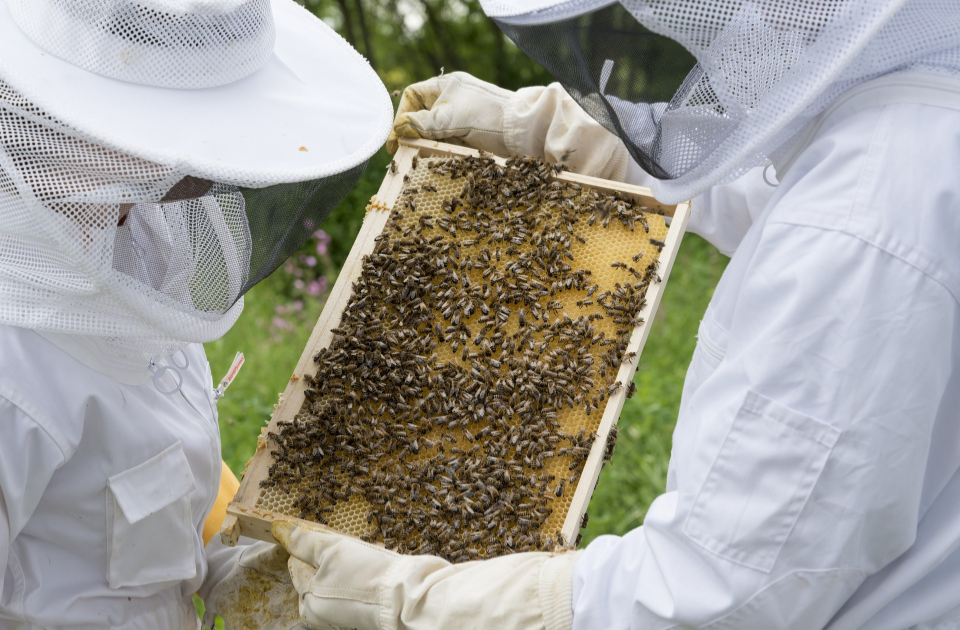


HONEY BEES AREESSENTIAL

250,000 species of flowering plants depend on honey bees for pollination. Chocolate, coffee, and even cotton would cease to exist without honey bees. And more than 80% of our cultivated crops are made possible by the honey bee.*
But in the past five decades, the number of honey bee hives in the United States has dropped from 6 million to 2.5 million.*


While monoculture, pesticides, climate change, and loss of habitat are all factors threatening honey bees—and all pollinators—around the globe, there’s no question that one of the most critical threats is the parasitic mite.*
WHAT IS VARROA DESTRUCTOR?
Varroa destructor is a parasitic mite that attaches to honey bees. They feed on honey bees’ fatty tissue, weakening honey bees’ immune systems, and using them to gain access to vulnerable hives.
Once inside, Varroa mites parasitize growing bee larvae, reducing lifespan and crippling a colony. Once a colony is completely infested and near collapse, the mites attach to drifting honey bees, infecting neighboring hives and beginning the cycle again.
But Varroa mites harm honey bees in other ways, too.
As the Varroa mites feed, the honey bees’ immune systems are weakened, leaving them more vulnerable to diseases, malnutrition, and pesticides. Worse, the Varroa is a vector of at least 14 different viruses including deadly pathogens such as acute paralysis (ABPV) and deformed wing viruses (DWV).
Critically, the damage Varroa mites cause to the honey bees’ systems means viruses which would have been survivable, have themselves become major threats to the population.*
Even with aggressive pesticidal treatments, Varroa can decimate a colony, leading to profound sickness, weakness, and eventual collapse. And those treatments carry with them a host of other dangers, like chemical toxicity, brood diseases, and critically — mite resistance.

A GLOBAL THREAT
Discovered in 1904, the Varroa has now spread to every continent but Australia. The Varroa was first detected in U.S. hives in 1987, and has established itself as the honey bees’ most devastating parasite in existence. Nearly every honey bee colony infested by Varroa will be killed unless there is intervention to reduce the mite population.



EVERBEE PROTECT™ IS WORKING TO CHANGE THAT
After four years of lab testing, trials at our home apiary, and working with beekeepers nationwide in our pilot program, our specially formulated treatment powder – Everbee Protect™ – continues to demonstrate high efficacy against Varroa mites.
KEEP UPDATED WITH OUR LATEST BLOG
Buzzworthy Results of the Everbee Protect™ Pilot Program
Here at Perpetual Pollen, we have dedicated our research and testing to innovate eco-safe products that explore unconventional methods to remove Varroa mites from hives.
View Details



